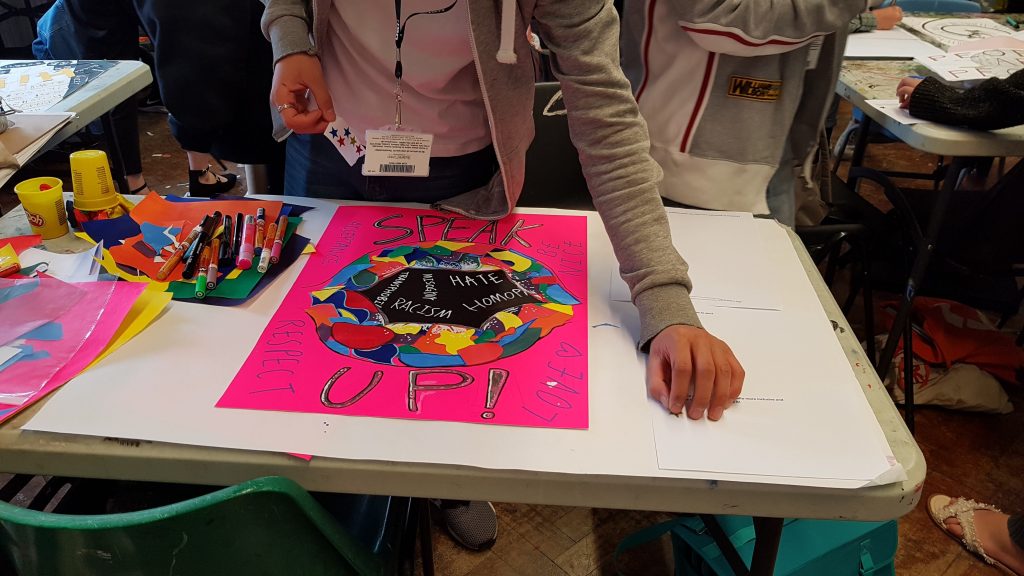
And exhale.
I have been planning this workshop for months. First as my Inclusive Teaching Unit intervention and then as the first event in my SIP. The workshop plan got up to draft 5 after feedback from my Teaching Within peers, the Lecturer who was lending me her students, and of course, my mum.
It was my first all-day workshop for higher education so given how obsessed I am with “doing a good job”, you know I was more prepared that the most badge-tested boy scout. Below are the lessons I learned and the observations I made.
Lesson 1 – Pace yourself.
I know I have a very hectic life. 3 jobs, a business, and a family is enough to make anyone drop the ball at some point but I knew for months that I’d be doing this. I might not have known the exact date until 3-4 weeks before but that is still plenty notice. So trying to get the final preparation push done in the same week that a major art commission is due might not have been my best plan. I went to bed at 1am last night and I was on the 6:54 train into London so I could print that last few things I needed for this morning. Soca music (from Trinidad & Tobago) kept me energised and ibuprofen kept me walking (cause the sciatica is acting up again) but you’d never know because the topic kept me charged up. If I was a battery, they’d call me long-life. It’s been about 48 hrs with minimal to no sleep. Guess who will pass out cold before 8pm tonight? I’m getting too old not to pace my work out so I don’t have to kill myself psychically to get everything done on time and to a high standard.
Lesson 2 – Practice makes perfect AND
Observation 1 – Your ability to wing it as a trainer is improving but..
By the time I finished printing out pages for blind drawings, stimulus collage boards, setting up Padlet pages, live google docs and putting together a 59-slide presentation (sweet baby Jesus!), I left myself time to do one run through. I practiced the trickiest bits but mostly I was only able to do a full run-through once. Refer to Lesson 1 to increase the amount of practice time. Today I found that I missed out a few things I planned to say and added in others I hadn’t planned on but it fit ok. It meant that there was a bit of chaos when students broke into groups to do their day project for this workshop. Instead, they were already on the move when I checked the notes and realised I’d missed a few key instructions. This meant I had to shout instructions over the buzz and hope that everyone heard me. Practice would have reduced this greatly. Having said that, I winged it a few times and dropped some truth bombs and discussion points that weren’t planned but they went down so so well.
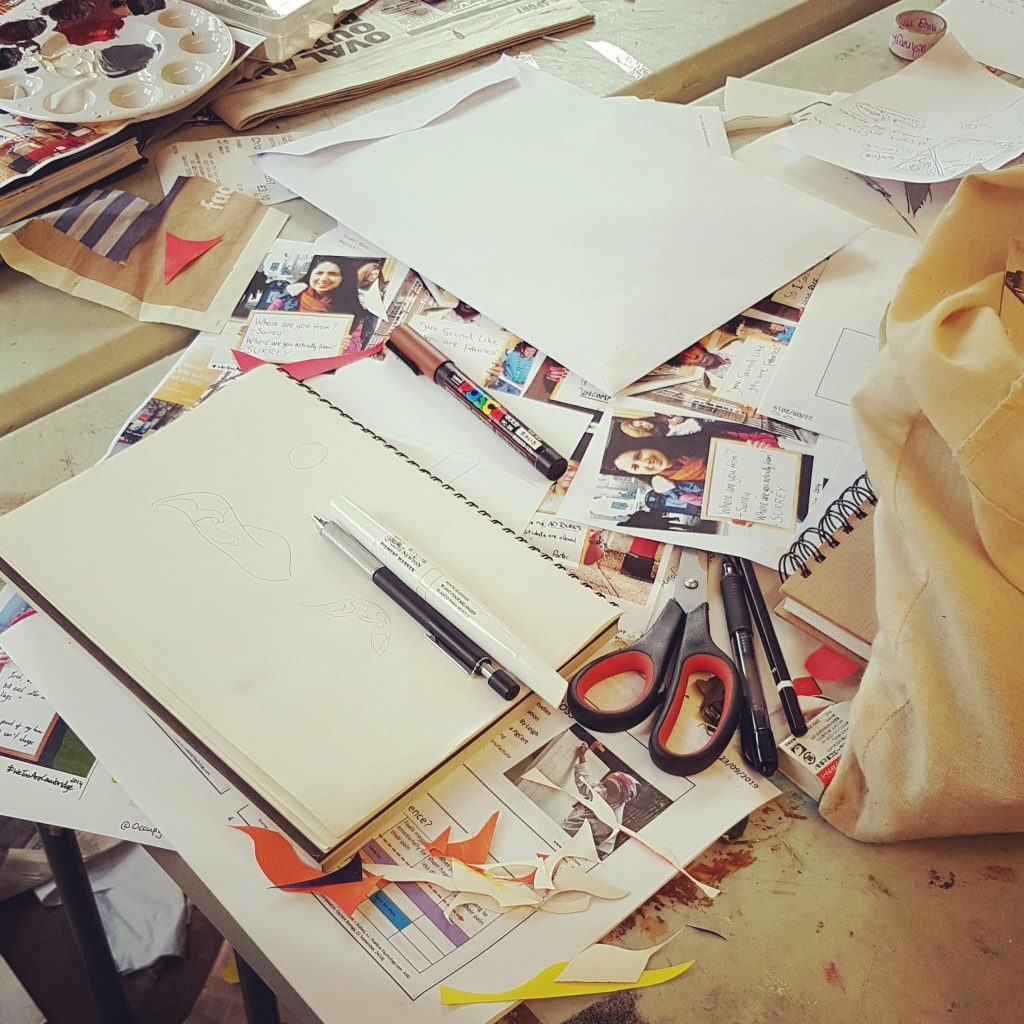
Observation 2 – Shut up!
This morning there was entirely too much talking… from me. As much as lecturing is a style of teaching, topics like this need the realisation to come from within, not a teacher telling them to “realise this”. I’m pretty sure I could have let them work out the difference between Compassion, Empathy, Sympathy and Pity rather than just telling them. Maybe reading out some scenarios and then asking them to vote about which term applies. I could have used Kahoot.com to make this into an online game. That would have broken the talking up a bit more. I got too reliant on “raise your hand if”. That’s not really an action. Come on Stacey. You know better. Next time provide more activities to extract info and ideas that would bring them to the topic I’m teaching.
Lesson 3 – Technology wins!
When teaching the next generation, use the next generation of technology. The reason I mentioned Kahoot.com was the amazing response I had online to the Padlet page (see image below) and the online survey (now closed, but click here to see a hardcopy). When I asked questions in the class, some people were very outspoken but most, particularly my Asian students were very quiet. I worried half-way through the morning that between the language barrier and the difference in teaching styles, I had lost them. Not at all. The Padlet page was filled by more than 90% of the class in less than 2 minutes. When it comes to being online and having the choice whether to be anonymous or not, they are so on board! And quick too! The online feedback survey got 36 responses out of 40 students present! Clearly, being online is a very comfortable space for this group. Using apps, website, QR codes and bit.ly links helped me to successfully span very varied education cultures (Eastern and Western) and secure way more response than I would have without the use of technology.
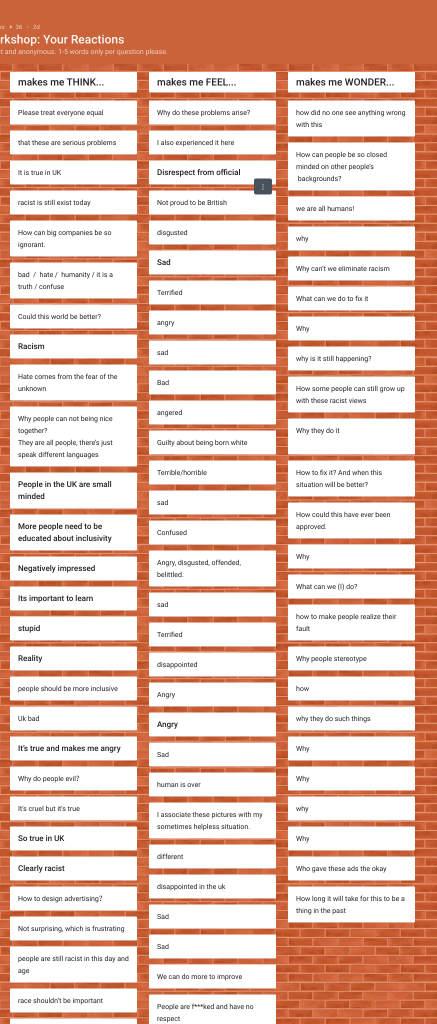
Lesson 4 – Don’t forget the Buffer
I am so glad that I slimmed down the original workshop plan. It was full to the brim and scheduled to the minute. There was no room for anything other than a pristinely perfect workshop, which let’s face it, is about as likely as having a champagne dinner with a unicorn and Pegasus. My built-in buffer of 15-20 mins allowed me to spend extra time on topics that seemed to need emphasis, extend discussions that were getting sweet, and not run off course because something unexpected called away the lecturer who was supporting me with this group.
The buffer wasn’t just in terms of time though. My presentation and teaching experience as well as the research I had done before hand, gave me two additional buffers to utilise. They allowed me to stay cool when I had to deviate from the “script” (aka the workshop plan). I easily helped students define “minority” and “majority minority” even though it wasn’t in my Key Terms list. I was able to cite several design principles (also not listed in the workshop plan) to help students think of areas in which they might give positive feedback to their peers. And when a student asked me how do you “make people realise they are at fault”, not only did I know the answer (that you cannot make anyone realise anything, only lead them to the info that might help them come to their own realisation) but I was able to improvise with a mini Q&A that helped the group come to the answer on their own. Winning!
Observation 3 – Those intercultural courses were spot on!
My class was half, if not mostly Chinese students. So there were many for whom English was not their first language and who were accustomed to a completely different education styles than I was raised with. What really prepared me for this was the Intercultural Training on Confucian Heritage Education Culture that I did voluntarily as one of my staff development courses. Getting an insight into what my students were accustomed to dealing with and how they might react to me was a game changer. I was not thrown by their lack of response in large group situations. I also didn’t freak out when I had a sea of passive or nodding faces that didn’t have any questions to ask. Thank goodness I included some online options to allow for anonymous responses. They were on it with a quickness and they proved that they were indeed listening intently and taking it all in. Yay!
Lesson 5 – I need to learn to pronounce non-Western names
Geez girl… wtf! I was butchering names all over the place. Pronunciation will have to be my next staff development course. I need to head over to Canvas and sign up stat!
Lesson 6 – if you give them an easy route, they’ll ignore the harder one.
So the feedback literacy session went well, or so I thought, until it came time for them to give each other feedback. They set out their finished posters along with two and a half A4 sheets that I had prepared for them. At the top of one sheet was the question “What does this work say to you?”, at the top of the other “Would this action make you feel welcome/included? Why/why not?”. There was space on the page for everyone viewing the poster to write their responses as they moved around the room. The half page was where they could stick a star if they were willing to commit to doing the suggested action to make their class more inclusive and compassionate. And that’s where I went wrong. By giving them a quick vote option, many avoided writing anything. In fact, as I moved around the room and saw how many pages had only 2 or 3 comments, I challenged them to stop taking the easy way out and give feedback that would help their peers. This upped the average comments to about 5 or 6 per page, which means the majority still withheld comment. Maybe I could have made the voting anonymous and online so they wouldn’t feel obliged to stick stars for their colleagues. That might lead to eyes on phones rather than eyes observing posters. Hmmm… Perhaps I could completely separate the two activities – feedback first, voting after? I need to give this more thought but what I know for sure is having the two activities together didn’t work very well.
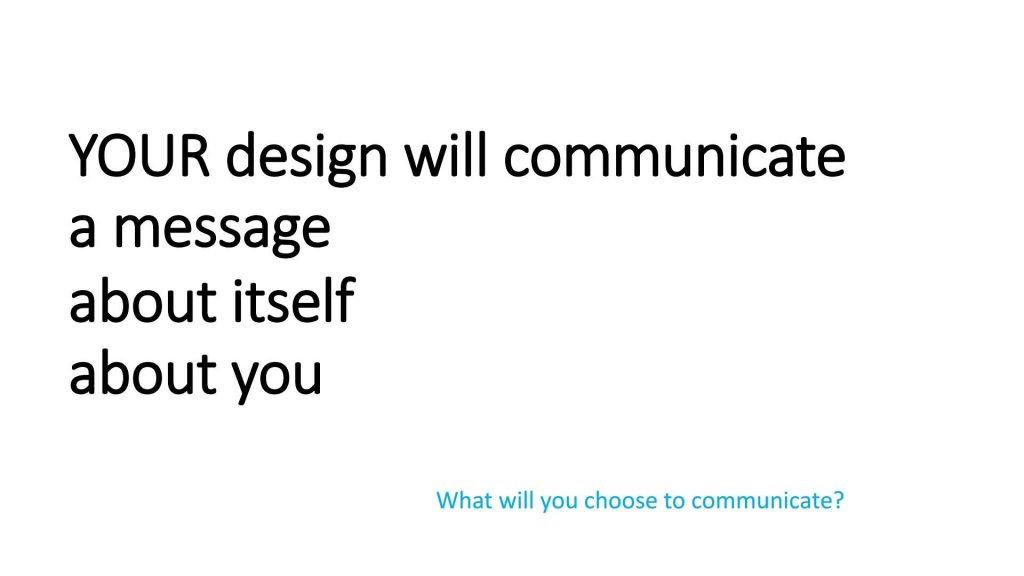
In Conclusion –
When planning the session, I knew I could draw in most if not all of the “western” students who would be accustomed to a teacher with a conversational personal approach like mine. Conversely, I fretted a lot about ensuring that I was relatable to the large number of Asian students in the room, for whom I would likely be a complete anomaly. I understood that for them teachers didn’t usually operate the way I did. I would be challenging a lot of their education history and expectations by just being me. But who else could I be? So I prepped as best I could and fretted a bit, which is why one of the best indicators of success for me was having 4 or 5 students (including 3 Asian students) see me in the hallway after the session and go out of their way to tell me how much they enjoyed the session.
I think for a first-time teaching Inclusivity & Compassion, I did really well. The students were listening, engaged and interested. They eagerly participated in almost all the activities I asked them to and they were pleased with their designs at the end of the day. This is a topic that is so in line with my life ethos that I cannot help but be passionate about it. Being able to teach it was amazing but I know there is room for improvement and I’m ready to sharpen my skills and spread more inclusivity and compassion.
Still winning!
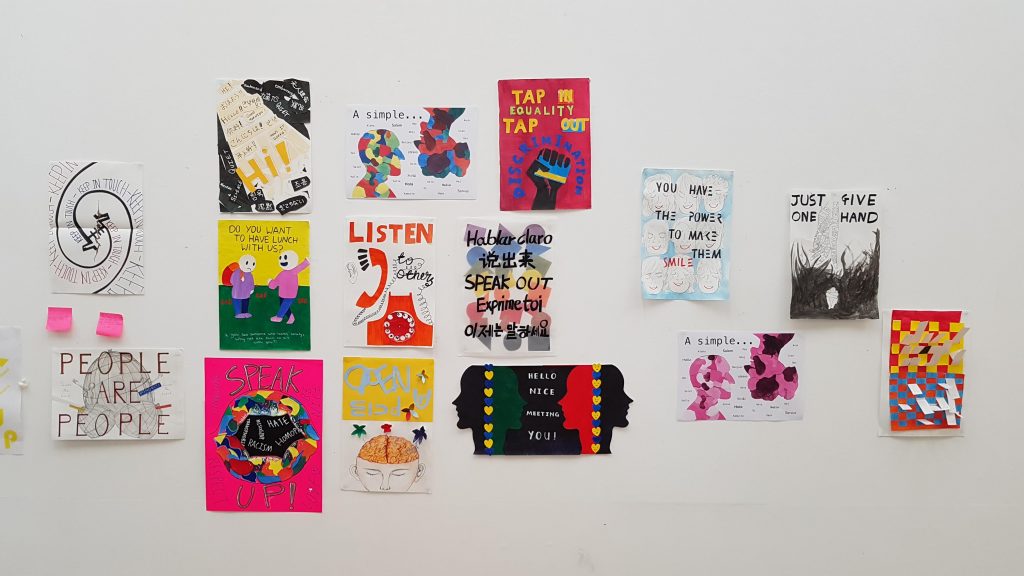
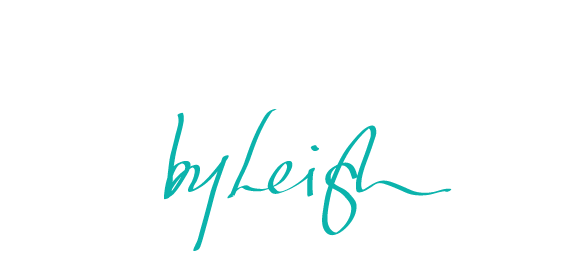
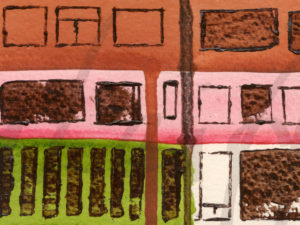


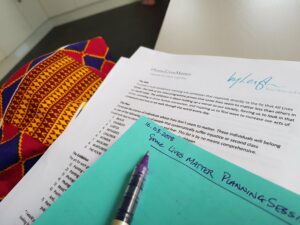



Exhibition Review – Blowtorching the Bitten Peach